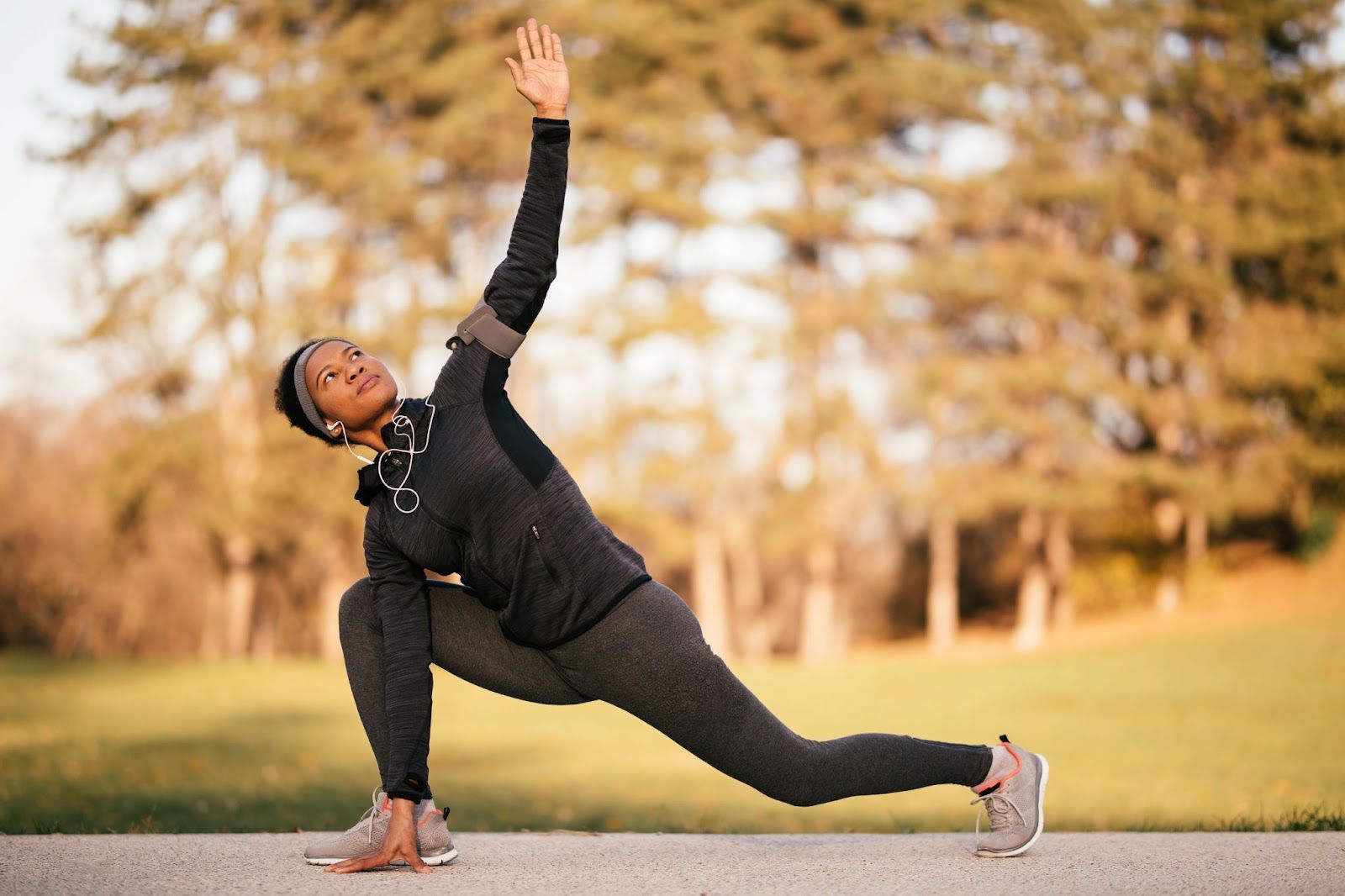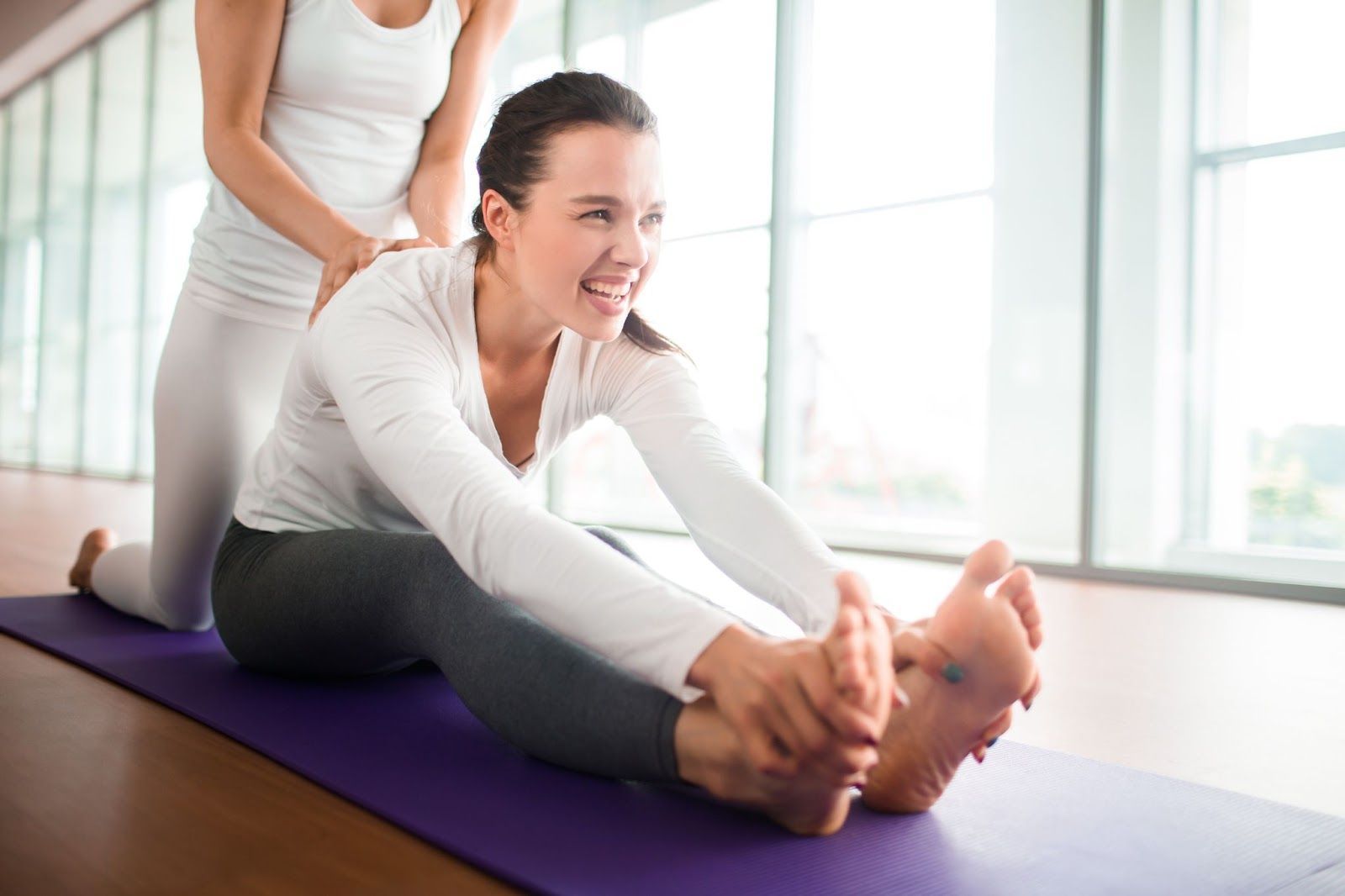Call us at (909) 674-0071
The Best Self-Stretches for Desk Workers: Reducing Tension and Improving Posture
Tension and poor posture among desk workers have become a common concern. Prolonged sitting can lead to muscle stiffness, particularly in the neck, shoulders, and lower back, contributing to discomfort and chronic pain. Additionally, maintaining a sedentary position for extended periods can adversely affect overall posture, leading to muscular imbalances and structural issues.
Whether you work from home or at the office, mitigating these effects must be your priority to maintain a healthy lifestyle. Incorporating regular stretching routines tailored to desk workers' needs is paramount to improving body posture. Stretching alleviates muscular tension, promotes flexibility, improves circulation, and enhances overall well-being. By dedicating even a few minutes each day to targeted stretches, desk workers can combat the negative consequences of prolonged sitting, fostering a healthier and more comfortable work experience.
Those working from home or in an office must have regular breaks to stretch, which can help combat the adverse effects of prolonged sitting. Explore some of the best self-stretches tailored specifically for desk workers. These stretches aim to loosen tight muscles and improve spinal alignment, leaving you feeling refreshed and revitalized during the workday.
The Importance of Self-Stretches for Desk Workers
Due to the sedentary nature of desk jobs, self-stretches are crucial. Prolonged sitting can lead to muscle stiffness, decreased flexibility, and poor posture, eventually resulting in discomfort, pain, and even long-term health issues.
Here are several reasons why incorporating self-stretches into the daily routine of desk workers is crucial:
Relieves Muscle Tension
Due to maintaining the same position for extended periods, desk workers often experience tension and tightness in muscles, particularly in the neck, shoulders, back, and hips. Self-stretches help alleviate this tension by elongating the muscles, improving blood circulation, promoting relaxation, and reducing discomfort.
Improves Flexibility
Regular stretching enhances flexibility, allowing desk workers to move more freely and comfortably. Improved flexibility also lessens the risk of overexertion or abrupt movement-related injuries like sprains and strains.
Enhances Posture
Prolonged desk work can lead to bad posture, typified by rounded shoulders, a forward head position, and a curved spine. Self-stretches that focus on the back, chest, and core muscles—the muscles in charge of upholding good posture—can aid in resolving imbalances and promoting improved alignment.
Reduces Risk of Musculoskeletal Disorders
Self-stretches can help reduce the likelihood of musculoskeletal conditions like carpal tunnel syndrome, thoracic outlet syndrome, and lower back pain caused by extended sitting. Stretching promotes joint mobility, reduces stiffness, and prevents muscle imbalances that can contribute to these conditions.
Boosts Energy and Productivity
Taking short breaks to perform self-stretches throughout the workday can revitalize both the body and mind. Stretching increases blood flow and oxygen delivery to the muscles and brain, promoting alertness, concentration, and productivity.
Promotes Mental Well-being
Stretching has many physical advantages, but it also positively affects mental health. Incorporating self-stretches into the daily routine allows desk workers to disconnect from work-related stressors momentarily, relax their minds, and practice mindfulness.
Encourages Mindful Movement
Being totally present in the moment and observing one's body's sensations are key components of mindful movement. Self-stretches facilitate this mindful awareness by encouraging individuals to focus on their breathing, the sensations of stretching, and any areas of tension or discomfort.
Supports Long-term Health
Consistent practice of self-stretches can contribute to overall health and longevity by preserving joint function, preventing muscle atrophy, and reducing the risk of chronic conditions such as cardiovascular disease, diabetes, and obesity.
Desk workers should incorporate self-stretches into their daily routine to maintain physical health, improve posture, increase flexibility, and support mental health. By taking regular breaks to stretch, desk workers can mitigate the negative effects of prolonged sitting and enjoy greater comfort, productivity, and overall quality of life.
Health Risks of Sitting Longer
Long-term sitting without breaks is associated with serious health risks, even for people who exercise regularly.
Here are some of the health risks associated with prolonged sitting:
Increased Risk of Chronic Diseases
Long periods of sitting have been linked to an increased risk of chronic conditions such as obesity, type 2 diabetes, cardiovascular disease, and certain types of cancer. Moreover, prolonged sitting can negatively affect metabolism, blood sugar regulation, and blood lipid levels, contributing to the development of these diseases.
Musculoskeletal Problems
Sitting for prolonged periods can lead to muscle stiffness, tension, and weakness, particularly in the muscles of the back, neck, shoulders, hips, and legs. Thus, musculoskeletal issues like hip, shoulder, back, and neck pain, as well as decreased mobility, may arise from this.
Poor Posture
Sitting for long hours can contribute to poor posture, characterized by rounded shoulders, forward head posture, and a curved spine. Over time, poor posture can lead to imbalances in muscle strength and flexibility and structural changes in the spine, increasing the risk of chronic back and neck pain.
Increased Risk of Blood Clots
Prolonged sitting can impair blood circulation, especially in the legs, which may increase the risk of developing blood clots, known as deep vein thrombosis (DVT). If a blood clot breaks loose and travels to the lungs, it can cause a life-threatening condition known as pulmonary embolism.
Negative Impact on Mental Health
Sedentary behavior has been associated with an increased risk of depression, anxiety, and stress. Long periods spent motionless and socially isolated at a desk can exacerbate depressive symptoms, lower moods, and diminished mental health.
Reduced Energy Expenditure
Sitting burns fewer calories than standing or engaging in physical activity. Prolonged sitting can decrease overall energy expenditure, which may contribute to weight gain and obesity over time.
Increased Mortality Risk
Several studies have found associations between prolonged sitting and an increased risk of premature death from all causes, independent of physical activity levels. Even individuals who meet recommended exercise guidelines may still be at risk if they spend long hours sitting.
To mitigate these health risks, it is essential to incorporate regular movement breaks throughout the day, stand up frequently, and engage in activities that promote active living, such as walking, stretching, and using standing desks. Breaking up prolonged periods of sitting with short bouts of physical activity can help improve circulation, reduce muscle stiffness, and lower the risk of chronic diseases associated with sedentary behavior.
Effective Self-Stretches to Relieve Desk Worker Tension
Desk workers often experience muscle tension and tightness due to prolonged sitting and repetitive motions. Here are some effective self-stretches to relieve tension and promote flexibility:
Neck Stretch
For a neck stretch, begin by sitting up tall in your chair. Gently tilt your head to one side, bringing your ear towards your shoulder. Hold this position for 15-30 seconds before switching sides. Remember to avoid rolling your head backward to prevent straining your neck.
Upper Trapezius Stretch
To perform an upper trapezius stretch, sit up tall and reach one arm behind your back. Then, tilt your head to the opposite side, bringing your ear towards your shoulder. Use your other hand to gently pull your head further into the stretch. Hold for 15-30 seconds before switching sides.
Chest Opener Stretch
For a chest opener stretch, whether sitting or standing, ensure your spine is straight. Clasp your hands behind your back and straighten your arms, squeezing your shoulder blades together while lifting your chest. Hold this position for 15-30 seconds, remembering to breathe deeply throughout.
Shoulder Stretch
A shoulder stretch involves bringing one arm across your body at shoulder height. With your other hand, gently press the arm closer to your chest. Hold for 15-30 seconds before switching sides, ensuring your shoulders remain relaxed and down away from your ears.
Wrist and Forearm Stretch
To perform a wrist and forearm stretch, extend one arm in front of you with the palm facing down. Use your other hand to gently press the extended hand's fingers toward you, holding for 15-30 seconds before switching sides. Repeat with the palm facing up to stretch the opposite side of the forearm.
Seated Spinal Twist
For a seated spinal twist, sit up tall in your chair and cross one leg over the other. Place the opposite hand on the outside of the bent knee and gently twist towards it. Hold for 15-30 seconds before switching sides, maintaining a long spine and relaxed shoulders throughout.
Hamstring Stretch
For a hamstring stretch, sit on the edge of your chair with one leg extended straight out in front of you. Flex your foot and hinge forward from your hips, keeping your back straight. Hold for 15-30 seconds before switching legs, feeling a gentle stretch along the back of your thigh.
Perform these stretches regularly throughout the day to help alleviate tension and improve flexibility. Listen to your body and avoid overstretching, especially if you have any existing injuries or conditions. Consult a healthcare professional for personalized advice if you experience persistent pain or discomfort.
Why Is it Important for Desk Workers to Stretch Regularly?
Due to the sedentary nature of desk jobs, regular stretching is crucial. Prolonged sitting can lead to muscle stiffness, decreased flexibility, and poor posture, resulting in discomfort, pain, and long-term health issues. By incorporating regular stretching into their routine, desk workers can alleviate muscle tension, improve flexibility, enhance posture, and reduce the risk of musculoskeletal disorders. Stretching promotes mental well-being, boosts energy levels, and supports overall health. Therefore, regular stretching is beneficial and essential for desk workers striving for optimal health and productivity.
To learn more about professional stretching services and the benefits of routine stretches, check out our
StretchX blog.
Certified Stretch Instructor
Phone: (909) 674-0071
Business Hours: Monday to Friday: 8am - 7pm • Saturday: 7am - 1pm
All Rights Reserved | StretchX





